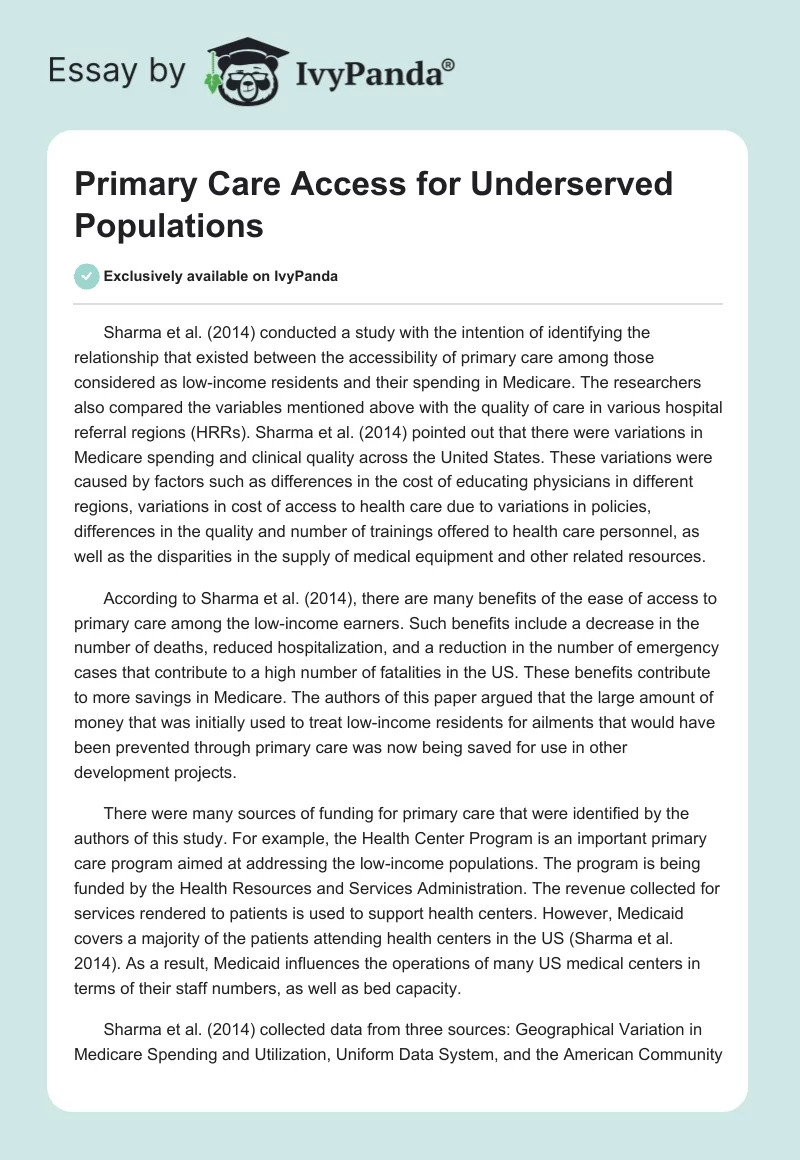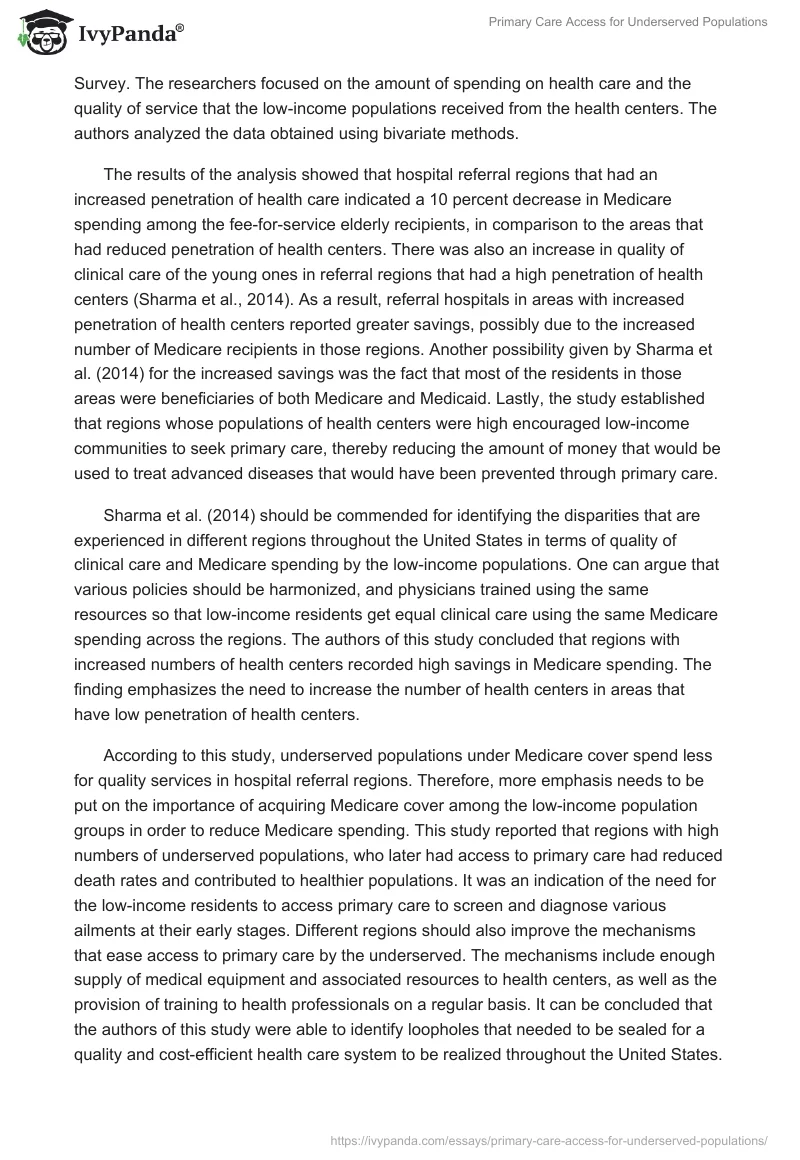Sharma et al. (2014) conducted a study with the intention of identifying the relationship that existed between the accessibility of primary care among those considered as low-income residents and their spending in Medicare. The researchers also compared the variables mentioned above with the quality of care in various hospital referral regions (HRRs). Sharma et al. (2014) pointed out that there were variations in Medicare spending and clinical quality across the United States. These variations were caused by factors such as differences in the cost of educating physicians in different regions, variations in cost of access to health care due to variations in policies, differences in the quality and number of trainings offered to health care personnel, as well as the disparities in the supply of medical equipment and other related resources.
According to Sharma et al. (2014), there are many benefits of the ease of access to primary care among the low-income earners. Such benefits include a decrease in the number of deaths, reduced hospitalization, and a reduction in the number of emergency cases that contribute to a high number of fatalities in the US. These benefits contribute to more savings in Medicare. The authors of this paper argued that the large amount of money that was initially used to treat low-income residents for ailments that would have been prevented through primary care was now being saved for use in other development projects.
There were many sources of funding for primary care that were identified by the authors of this study. For example, the Health Center Program is an important primary care program aimed at addressing the low-income populations. The program is being funded by the Health Resources and Services Administration. The revenue collected for services rendered to patients is used to support health centers. However, Medicaid covers a majority of the patients attending health centers in the US (Sharma et al. 2014). As a result, Medicaid influences the operations of many US medical centers in terms of their staff numbers, as well as bed capacity.
Sharma et al. (2014) collected data from three sources: Geographical Variation in Medicare Spending and Utilization, Uniform Data System, and the American Community Survey. The researchers focused on the amount of spending on health care and the quality of service that the low-income populations received from the health centers. The authors analyzed the data obtained using bivariate methods.
The results of the analysis showed that hospital referral regions that had an increased penetration of health care indicated a 10 percent decrease in Medicare spending among the fee-for-service elderly recipients, in comparison to the areas that had reduced penetration of health centers. There was also an increase in quality of clinical care of the young ones in referral regions that had a high penetration of health centers (Sharma et al., 2014). As a result, referral hospitals in areas with increased penetration of health centers reported greater savings, possibly due to the increased number of Medicare recipients in those regions. Another possibility given by Sharma et al. (2014) for the increased savings was the fact that most of the residents in those areas were beneficiaries of both Medicare and Medicaid. Lastly, the study established that regions whose populations of health centers were high encouraged low-income communities to seek primary care, thereby reducing the amount of money that would be used to treat advanced diseases that would have been prevented through primary care.
Sharma et al. (2014) should be commended for identifying the disparities that are experienced in different regions throughout the United States in terms of quality of clinical care and Medicare spending by the low-income populations. One can argue that various policies should be harmonized, and physicians trained using the same resources so that low-income residents get equal clinical care using the same Medicare spending across the regions. The authors of this study concluded that regions with increased numbers of health centers recorded high savings in Medicare spending. The finding emphasizes the need to increase the number of health centers in areas that have low penetration of health centers.
According to this study, underserved populations under Medicare cover spend less for quality services in hospital referral regions. Therefore, more emphasis needs to be put on the importance of acquiring Medicare cover among the low-income population groups in order to reduce Medicare spending. This study reported that regions with high numbers of underserved populations, who later had access to primary care had reduced death rates and contributed to healthier populations. It was an indication of the need for the low-income residents to access primary care to screen and diagnose various ailments at their early stages. Different regions should also improve the mechanisms that ease access to primary care by the underserved. The mechanisms include enough supply of medical equipment and associated resources to health centers, as well as the provision of training to health professionals on a regular basis. It can be concluded that the authors of this study were able to identify loopholes that needed to be sealed for a quality and cost-efficient health care system to be realized throughout the United States.
Reference
Sharma, R., Lebrun-Harris, L.A., & Ngo-Metzger, Q. (2014). Costs and clinical quality among Medicare beneficiaries: associations with health center penetration of low-income residents. Medicare & Medicaid Research Review, 4(3), 1-17.


